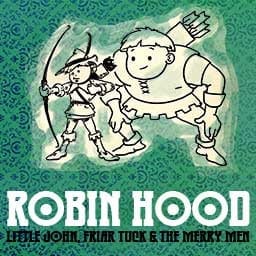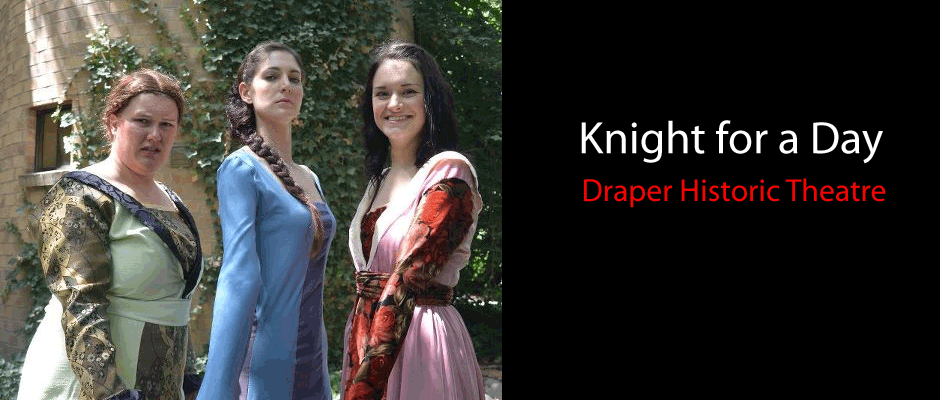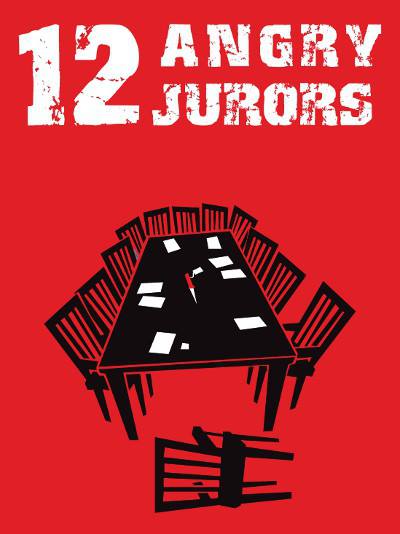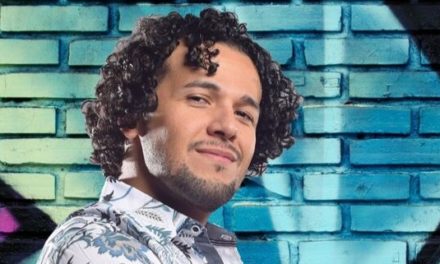SALT LAKE CITY — The Utah Children’s Theatre’s Robin Hood, adapted and directed by Joanne Parker, packs an incredible amount of punch into two hours. This historically detailed retelling begins in Robin’s childhood and ends with the restoration of King Richard (Michael Hohl) to his throne. Along the way, Robin (Landon Kraczek) and his cousin Will Scarlet (Spencer Hohl) meet a variety of men in the Sherwood Forest who share a loyalty to King Richard and a desire to help all those, Norman or Saxon, in need of help. During one such bout of assistance, Robin falls for the beautiful Maid Marian (Mary Michael Hohl) and sends the evil Sir Guy of Gisbourne (Matthew Windham) back to Prince John (Adam M. Argyle) in his underpants. Robin collects allies and enemies in equal amounts as he fights in the name of the king, but none is as loyal as Maid Marian. In the end, it is she who saves him from hanging and emerges every bit as much a hero as Robin Hood himself.
The crowning achievement of this production was its incredibly staged combat scenes. Fight choreography by Jakob Lau Smith Tice kept the actors constantly engaged in believable combat using a variety of weapons. Each staged sword battle was noticeably different from every other, with each character possessing various levels of skill. It was particularly fascinating to watch Kraczek fight off a room full of Normans when Prince John first attempted to have him seized. However, the most captivating moments were when the characters got to fight with a quarter staff. When Little John (Oran Marc de Baritault) and Robin Hood parried in the forest, the battle progressed with incredible speed and skill.
Between fight scenes, however, the show was less captivating. The dialogue was detailed, including frequent historical explanations regarding the conflict between the Saxons and the Normans. The actors delivered their lines without the assistance of microphones. In most cases, the dialogue was clear; however, the actors frequently yelled in order to project the dialogue or to communicate emotion. In these moments, the complex dialogue became even more difficult to follow. Fortunately, the actors supplemented the dialogue with excellent physical storytelling. In one scene, Kraczek launched himself onto the back of Bryson Dumas (Friar Tuck), who was perfectly willing to return the gesture. In addition, many scenes featured one full-grown man slung over the shoulder of another.
The Children’s Theatre is built as a thrust stage with audience seating on three sides. In addition to the main level stage, there is a balcony area above each side audience, generally accessible by a set of upstage stairs. In this production, however, nothing was off limits as an access to or from the balcony stages. Men climbed up and jumped down the downstage walls effortlessly, making it possible for multiple characters to enter or exit simultaneously. Parker used this capability frequently, and seated near one of these entrances, I frequently felt a rush of wind as the characters hurried past. Each actor that passed stayed in character until fully out of view of the entire audience, and this commitment to character helped reinforce the many subplots. However, with so much action happening so near the edges, it was occasionally difficult to see the main stage. As Friar Tuck entered dressed as a maiden, trying to distract Robin Hood’s would-be executioners, I was only able to imagine the get-up as a large guard stood blocking my view of the scene.
The stage combat and storytelling combined with lights (James Parker) and costumes (Christina Wilson and Cathy Maurer) created an exciting adventure. On numerous other Salt Lake Valley stages, I could have considered this show to be a general success. But presented to an audience filled largely with children, this show may not have hit the bull’s eye. First, the show ran over two hours, a particularly long time for a young audience to remain seated. Secondly, this adaptation’s historical focus may have been lost to a majority of the younger audience. Finally, the expert stage combat may have been frightening to young audience members. An announcement was made before the show cautioning parents of children who may be easily frightened to avoid seating on the front rows. Although the fighting never seemed to come too near the audience, the rapid exits appeared to create a potential danger. Most actors including Kraczek tucked their sword hilts tightly into their sides and faced their blades to their rear as they exited. However, there were occasions when the swords were less carefully held and when actors exited past the front row with blades facing the audience. In one particular moment, Little John wrestled the assassin sent to kill King Richard (Cameron Colony) to the ground, and strangled him at my feet. At that moment, my young son leaned into my arm for comfort.
Unfortunately for this production, its strengths are also its weaknesses. But if you have a passion for history or for the legend of Robin Hood, take your older children (or even a date) to see this adaptation of a classic tale. Be certain to arrive early to take advantage of the limited parking and to enjoy your choice of general admission seating. You’ll be in for two hours of non-stop action.






